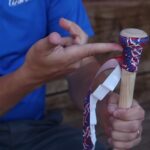Wrapping a baseball bat is an essential skill for every baseball player, coach, or enthusiast. Not only does it preserve the bat’s longevity, but it also ensures a firm grip, enhancing performance at the plate.
In this post, I will guide you through the process of wrapping your baseball bat, ensuring it’s ready for your next big game.
In this article, you will learn:
- Essential Materials and Preparation: Learn about the necessary tools and materials for wrapping a baseball bat, including tape, utility knife, and sandpaper.
- Step-by-Step Wrapping Guide: Detailed instructions on how to properly remove old tape, apply new tape, and ensure a secure, comfortable grip.
- Customization Tips: Insights on how to choose the right tape and customize the grip to suit personal preferences and playing style.
- Maintenance and Care: Advice on regular maintenance, including when to re-wrap and how to clean your bat for longevity and optimal performance.
- Safety and Compliance: Understanding the importance of adhering to league regulations and prioritizing safety while wrapping and using your baseball bat.
Why Bat Care and Preparation Matters
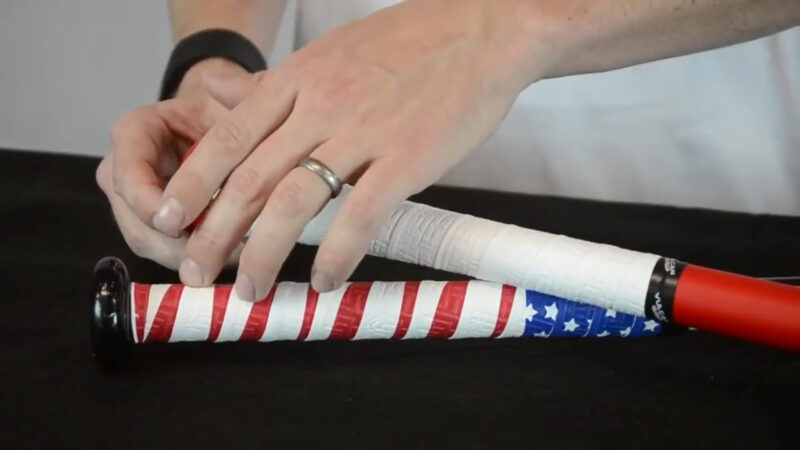
The life of a baseball bat, the same as it is with a softball bat, extends beyond the field. Regular maintenance, especially replacing the grip, is vital.
As the grip wears out, it loses its effectiveness, impacting your performance. Wrapping your bat is a simple yet crucial step in bat care.
Materials Needed for Wrapping
Before starting, gather the necessary materials. You’ll need a utility knife, sandpaper, your chosen tape, a magic marker, and latex gloves.
Make sure your materials are of good quality – this will reflect in the bat’s grip and longevity.
Step-by-Step Guide to Wrapping Your Bat
Step 1: Removing Old Tape and Residue
Start by removing the old tape. Peel it off carefully and use the utility knife if needed. Once the tape is off, use sandpaper to remove any residue.
This ensures a clean surface for the new grip.
Step 2: Marking the Bat
Use a magic marker to mark where the new tape will end. This is important for consistency and precision.
It also helps to ensure that the tape doesn’t interfere with the bat’s balance.
Step 3: Securing the Bat
Secure the bat in a stable position before starting the taping process. This can be done by placing it between your legs or securing it in a vice.
Stability is key to a smooth wrapping process.
Step 4: Applying the First Layer of Tape
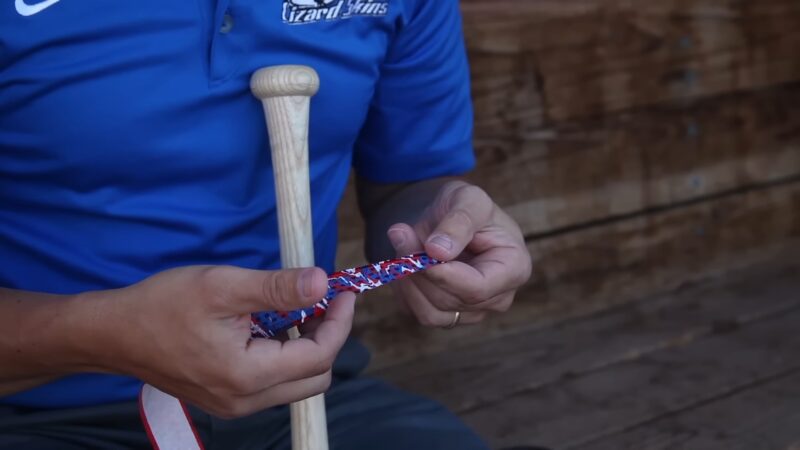
Begin wrapping the tape at the base of the bat. Keep the tape at a 45-degree angle and leave slight spaces between wraps.
This angle provides a better grip and ensures durability.
Step 5: Adding the Second Layer
Once the first layer is complete, start the second layer in the opposite direction. This layer fills any gaps and adds extra cushioning and grip.
Step 6: Testing the Grip
After wrapping, it’s crucial to test the grip. Hold the bat and take a few swings.
This helps in identifying any loose or uncomfortable spots.
Step 7: Making Adjustments
If necessary, make adjustments to the tape. You might need to add more layers or tighten the existing ones.
The goal is to achieve a grip that feels both comfortable and secure.
Additional Tips and Tricks
- Choosing the Right Tape: The choice of tape material and color is a personal preference. However, for the best performance, choose tapes that absorb moisture to prevent slipping. Avoid using plastic or shiny electrical tape, especially for league play.
- Final Touches: After wrapping, some players like to add personal touches, such as patterns or additional layers for extra grip. Feel free to experiment, but remember that comfort and functionality are key.
Advanced Techniques and Considerations
Perfecting Your Technique
As you become more experienced in wrapping your bat, you might want to experiment with different techniques. For instance, varying the tension of the tape can affect the bat’s feel and grip.
A tighter wrap offers more control, while a looser wrap can provide more comfort. Finding the right balance is key.
Customizing Your Grip
Personalizing the grip to suit your style can significantly impact your performance. Some players prefer a thicker grip for more cushioning, while others opt for a thinner grip for better feel and control.
Experiment with different thicknesses to find what works best for you.
Dealing with Moisture
In humid conditions, a bat’s grip can become slippery. Using moisture-absorbing tape is crucial in these scenarios.
Additionally, some players use rosin bags or grip-enhancing sprays for extra tackiness. This ensures a firm grip, no matter the weather.
The Importance of Regular Maintenance
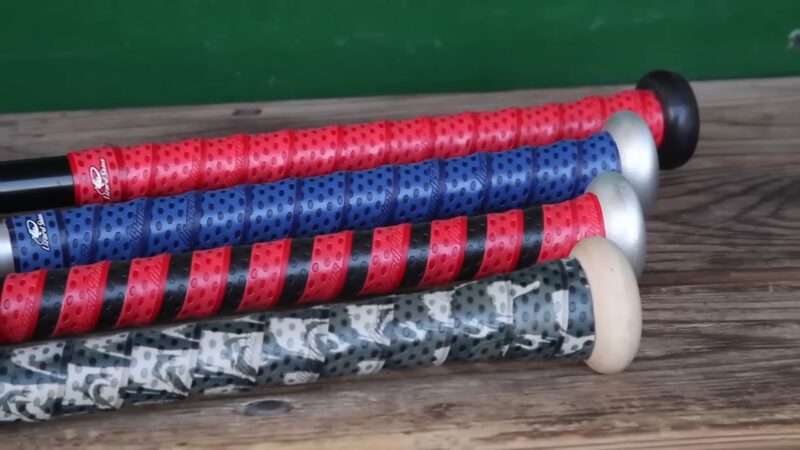
When to Re-Wrap
Regularly inspect your bat’s grip for signs of wear and tear. A grip that starts to unravel or lose its tackiness needs immediate replacement.
Keeping the grip in top condition ensures consistency in your swings.
Cleaning Process
Apart from re-wrapping, regular cleaning of your bat is essential. Wipe down the bat with a damp cloth to remove dirt and grime.
This not only keeps the bat looking good but also preserves the integrity of the wood or metal.
Safety and Compliance
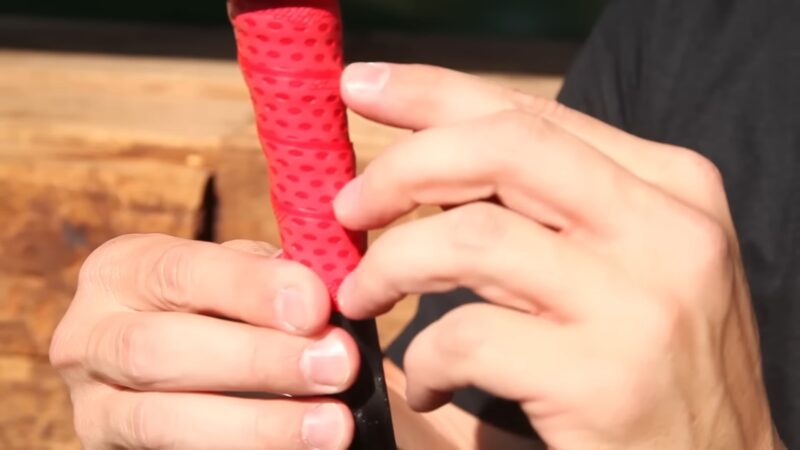
League Regulations
Be aware of league regulations regarding bat wrapping. Some leagues have specific rules about the type of tape and the extent to which a bat can be wrapped.
Always ensure your bat complies with these regulations to avoid penalties.
Safety First
Always prioritize safety when wrapping and using your bat. Ensure that the grip is secure and won’t unravel during play.
A loose grip can lead to accidents and injuries, both to the batter and others.
Recap of Key Points
- Regular maintenance of your bat, including re-wrapping, is essential for performance and longevity.
- Choose the right materials and follow a step-by-step process for optimal results.
- Customize the grip to fit your style and needs.
- Be aware of and comply with league regulations regarding bat wrapping.
FAQs
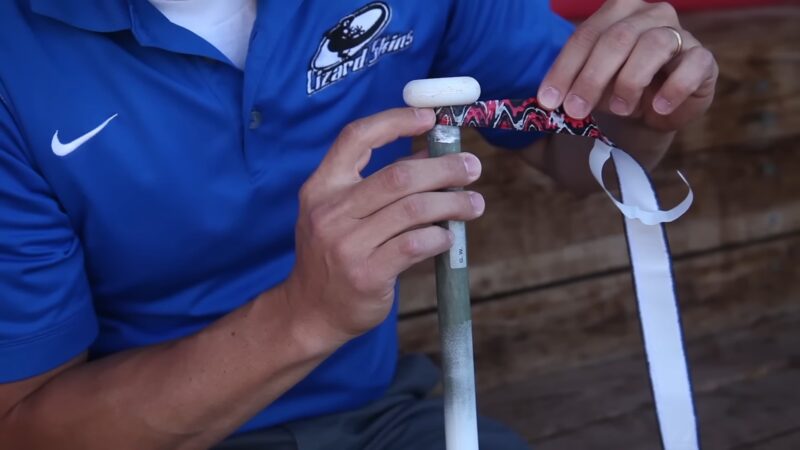
Can I wrap a wooden bat the same way as an aluminum one?
Yes, the process of wrapping is similar for both wooden and aluminum ones. However, ensure that the tape adheres well to the surface material of your bat.
How often should I replace the tape on my bat?
You should replace the tape when it starts to peel, lose its grip, or gets excessively dirty. For frequent players, this might be every few weeks or months, depending on usage.
Is it necessary to wear gloves while wrapping a bat?
It’s not mandatory, but wearing latex gloves can help you get a smoother finish and keep the tape clean from oils and dirt from your hands.
Can I use any type of tape for my bat?
It’s best to use specialized bat grip tape designed for baseball bats. Avoid using tapes like duct tape or electrical tape, as they may not provide the necessary grip and could deteriorate quickly.
What should I do if bubbles form under the tape?
If bubbles form, it usually indicates trapped air or uneven application. Gently peel back the tape, smooth out the surface, and reapply it carefully to avoid air pockets.
How tight should the wrap be on the bat?
The wrap should be tight enough to stay secure and not unravel but not so tight that it becomes stiff and uncomfortable to grip. Aim for a firm yet flexible wrap.
Final Words
Wrapping a baseball bat is more than just a maintenance task; it’s an opportunity to enhance your game. A well-wrapped bat not only looks professional but also provides the confidence and grip needed for powerful and controlled swings.
Follow these guidelines, and you will ensure that your bat is always in prime condition, ready for every game and every swing. Keep in mind that the bat is an extension of the player. A well-cared-for one reflects a player who is serious about their game.
Keep practicing, keep playing, and keep wrapping it with care and precision.







